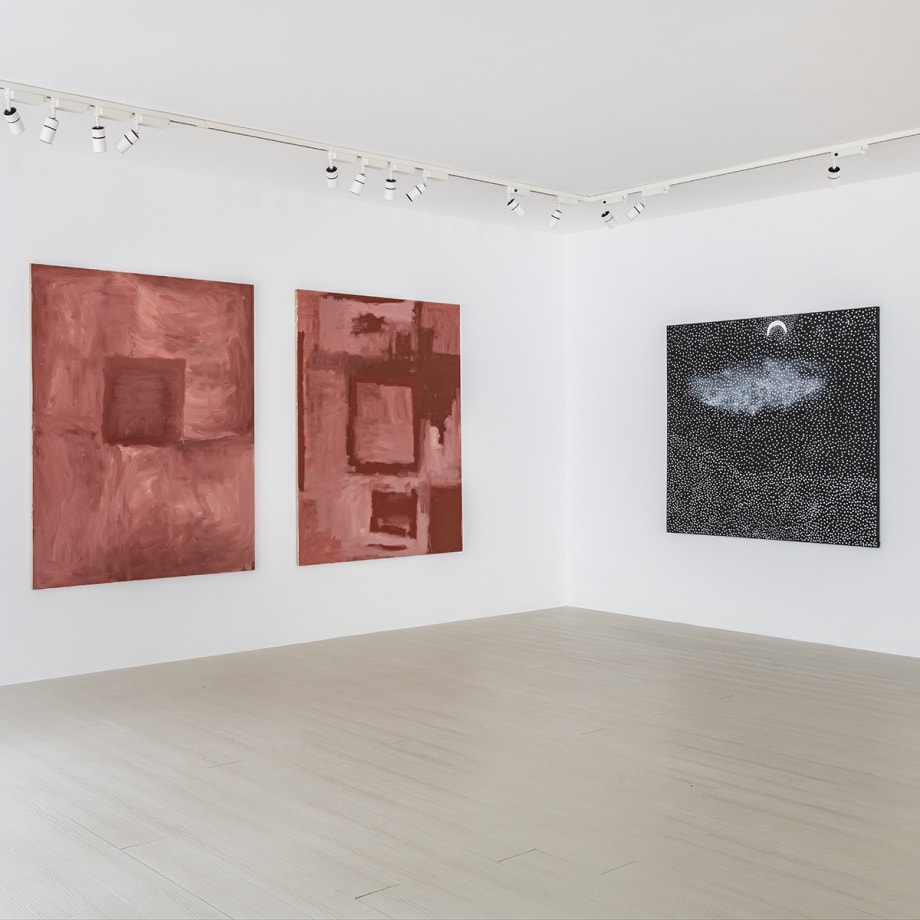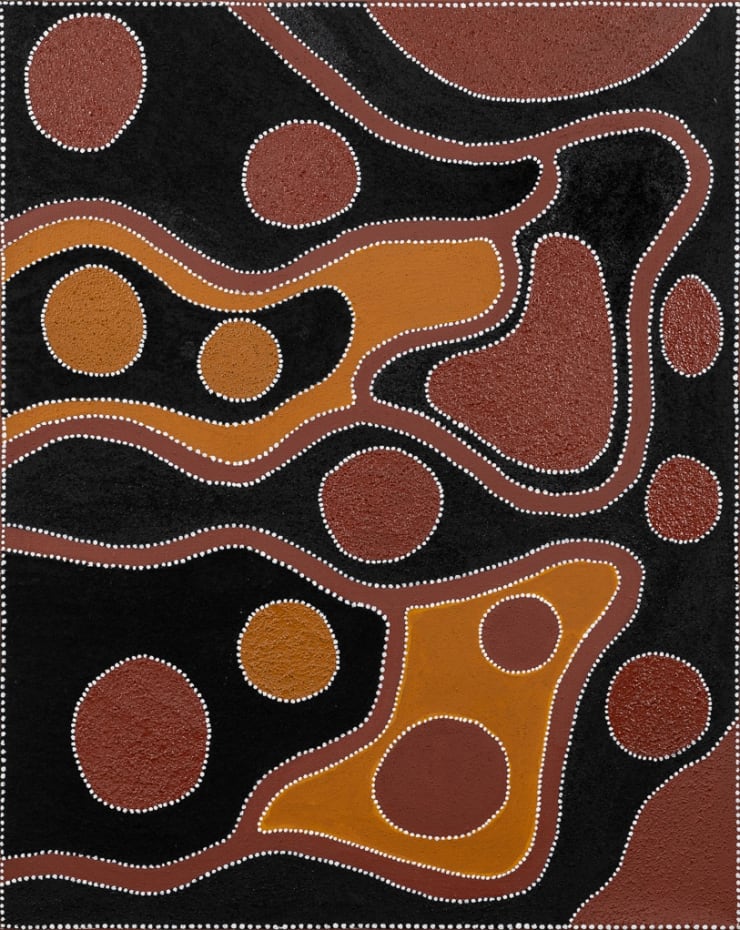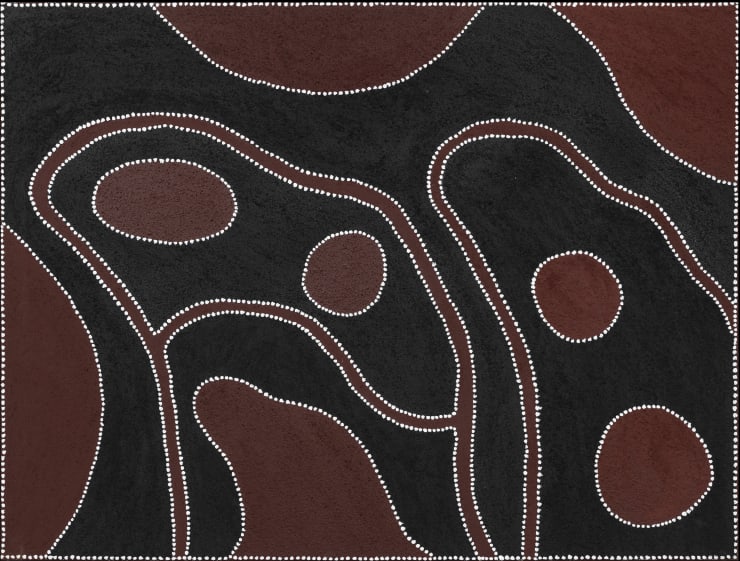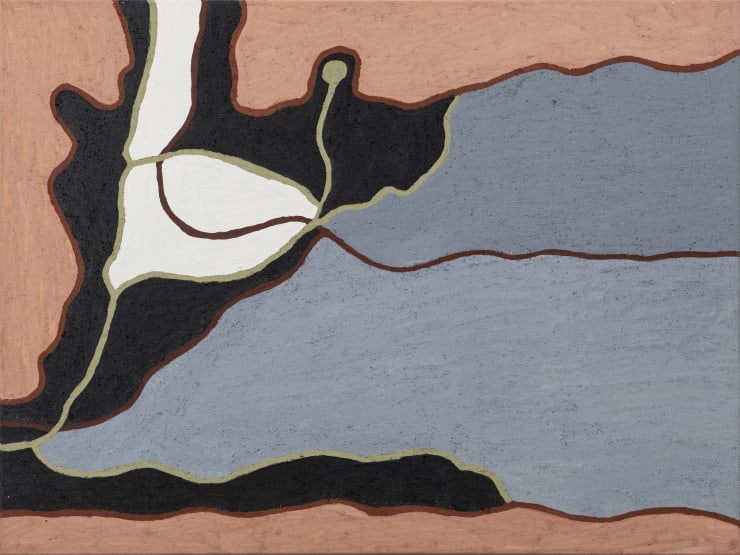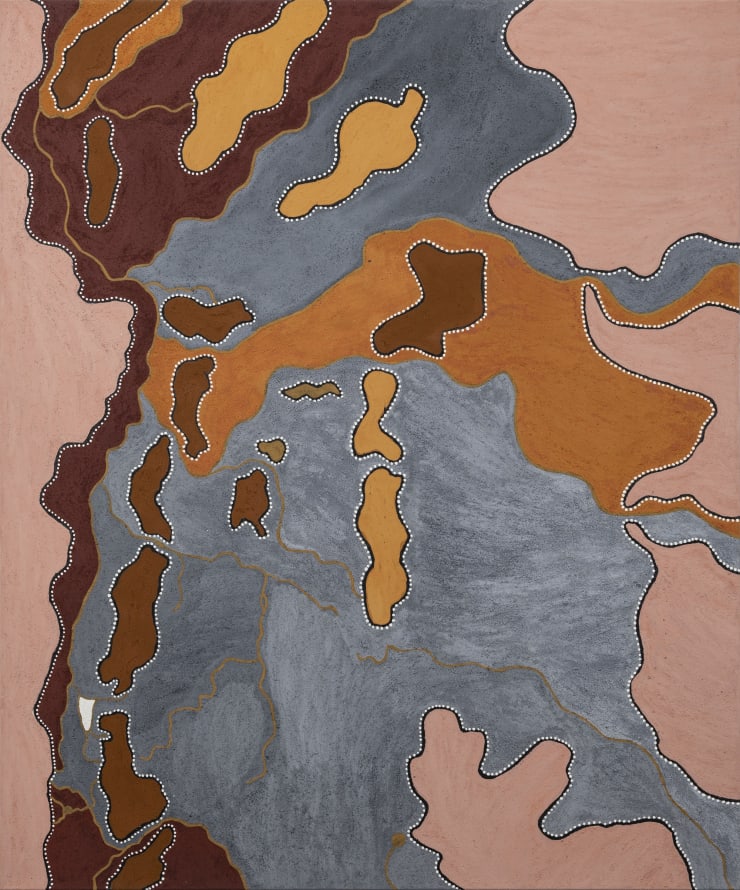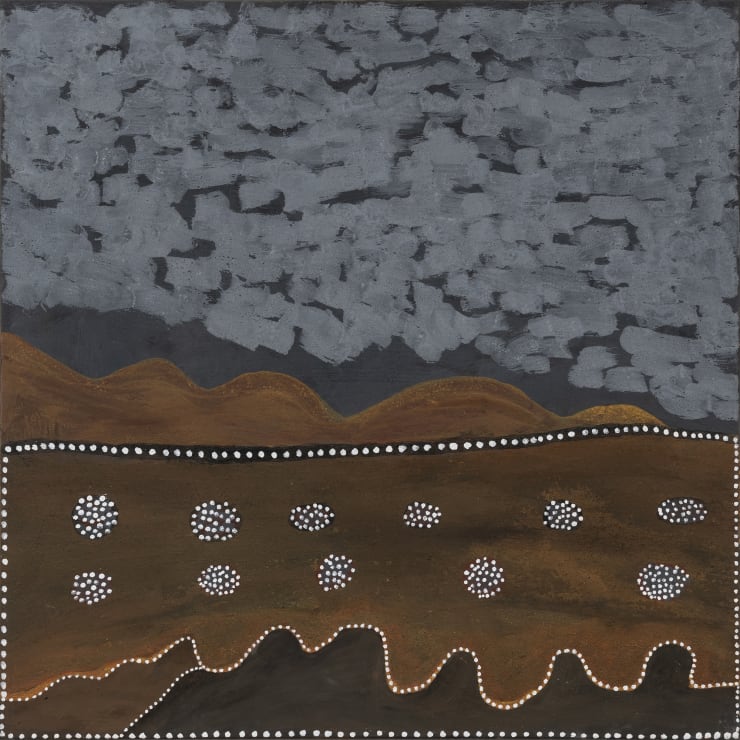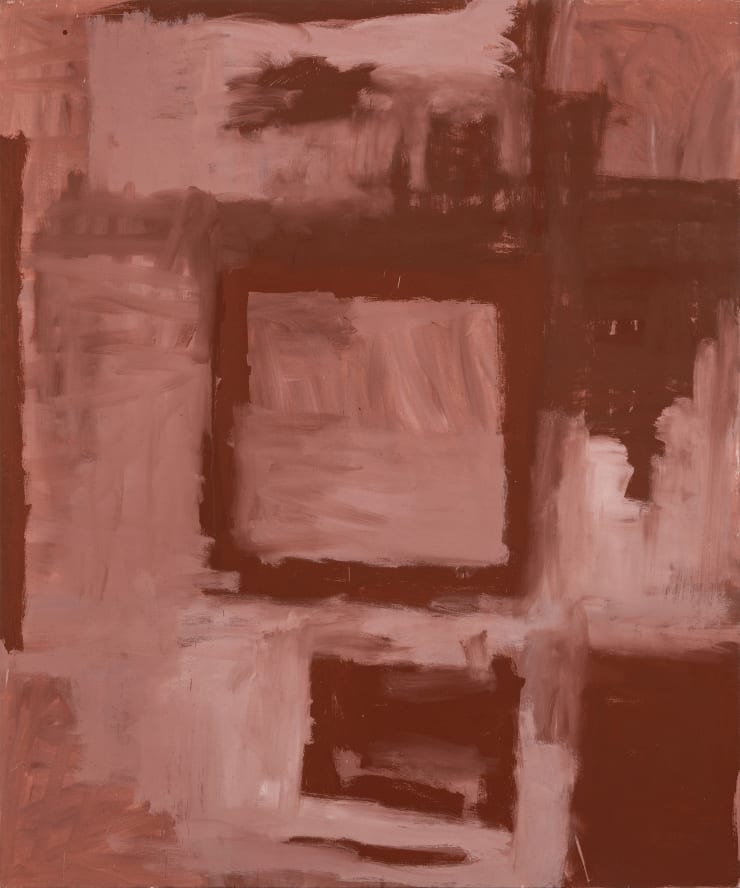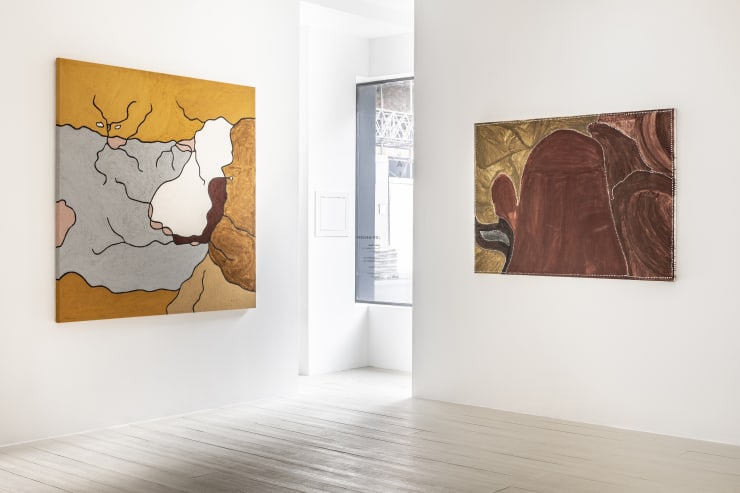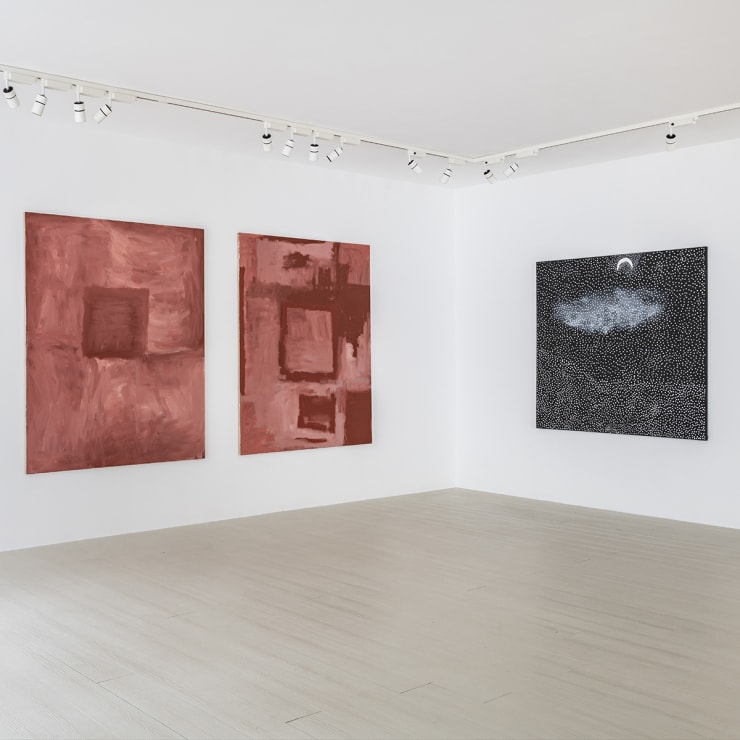Ngarranggarni
Twenty paintings by senior Gija artists from the Warmun community. Gija Country covers a vast area in the spectacular north east Kimberley region, an awe-inspiring landscape of Western Australia.
Churchill Cann | Tommy Carroll | Lindsay Malay | Patrick Mung Mung | Mr R Peters | Rammey Ramsey
The concept of Ngarranggarni (dreaming) is an expansive and complex one that defies simple definition or translation. It is common to many language groups in the Kimberley region, and refers to "The time when the landscape took its present form and the rules for living came into being." As well, the Ngarranggarni provides a complex framework that continues to encode, nourish and maintain Gija laws and conceptions of social organisation, trade and exchange, kinship relations and family ties, custodianship of country and the practice of song, dance, spirituality, art, language and philosophy.
The paintings document a continuum of integrity evident in the artist's storytelling of place and rich cultural traditions and evoke the beauty of remote landscape. Maps of country and powerful images relate to harsh realities and the troubled history of the Gija people, post white British settlement. The Gija artists from the Warmun community paint their country using only natural earth ochres from their land. Each canvas is painted using hand-collected and crushed natural pigments in a luscious array of earth tones.
It gives me enormous pleasure to present this body of work at a time when our daily lives have become more complicated and a feeling of uncertainty is prevalent for many of us. I hope this exhibition brings a sense of positivity and light to those of you who are able to visit, as well as experience online, and that you are able to share in the great sense of optimism I feel at exhibiting these paintings by these exceptional artists who have displayed resilience over millennia. Indigenous Australians have been suffering through the Covid-19 pandemic, and many of their communities are severely affected, even though they are living remotely across a vast continent.
Significant aboriginal massacre sites have been identified across the Kimberley region. The traumatic nature of these bloody events is evident in the Gija artists' work for whom these tragedies bear great personal significance, and continue to feature on their canvases. The paintings enable important cultural stories to live on, reminding and informing Australians of this part of their national history.
Despite shocking events both past and present, the resilient Gija people have sustained practices and beliefs passed down from their ancestors and embedded in their country, for more than 60,000 years in an unbroken society. 'Country' is inseparable from identity as people, and their contemporary works are expressions of aboriginal traditions and beliefs, and demonstrate the Gija's determination for cultural maintenance and a driving passion to pass cultural beliefs to future generations.
- Jennifer Guerrini Maraldi, extract from Ngarranggarni exhibition catalogue
-
 Churchill Cann, Moorliji, 2014
Churchill Cann, Moorliji, 2014 -
 Churchill Cann, Red Butte, 2012
Churchill Cann, Red Butte, 2012 -
 Tommy Carroll, Nuguwarrding (Snake Dreaming), 2017
Tommy Carroll, Nuguwarrding (Snake Dreaming), 2017 -
 Tommy Carroll, Nuguwarrding (Snake Dreaming), 2019
Tommy Carroll, Nuguwarrding (Snake Dreaming), 2019 -
 Tommy Carroll, Nuguwarrding (Snake Dreaming), 2019
Tommy Carroll, Nuguwarrding (Snake Dreaming), 2019 -
 Lindsay Malay, Bulgundi (Homeland), 2017
Lindsay Malay, Bulgundi (Homeland), 2017 -
 Lindsay Malay, Going Home, 2018
Lindsay Malay, Going Home, 2018 -
 Lindsay Malay, Little Fitzroy River Catchment, 2018
Lindsay Malay, Little Fitzroy River Catchment, 2018 -
 Lindsay Malay, My Ganggyi Country, 2019
Lindsay Malay, My Ganggyi Country, 2019 -
 Lindsay Malay, My Grandfather's Story, 2019
Lindsay Malay, My Grandfather's Story, 2019 -
 Patrick Mung Mung, Droving Through Texas, 2019
Patrick Mung Mung, Droving Through Texas, 2019 -
 Mr R Peters, Big Bullock Yard, 2013
Mr R Peters, Big Bullock Yard, 2013 -
 Mr R Peters, Water Brain, The Last Story, 2012
Mr R Peters, Water Brain, The Last Story, 2012 -
 Mr R Peters, Yariny Daam (Moon Dreaming Country), 2015
Mr R Peters, Yariny Daam (Moon Dreaming Country), 2015 -
 Rammey Ramsey, Warlawoon Country, 2006
Rammey Ramsey, Warlawoon Country, 2006 -
 Rammey Ramsey, Warlawoon Country, 2006
Rammey Ramsey, Warlawoon Country, 2006 -
 Rammey Ramsey, Warlawoon County, 2006
Rammey Ramsey, Warlawoon County, 2006
